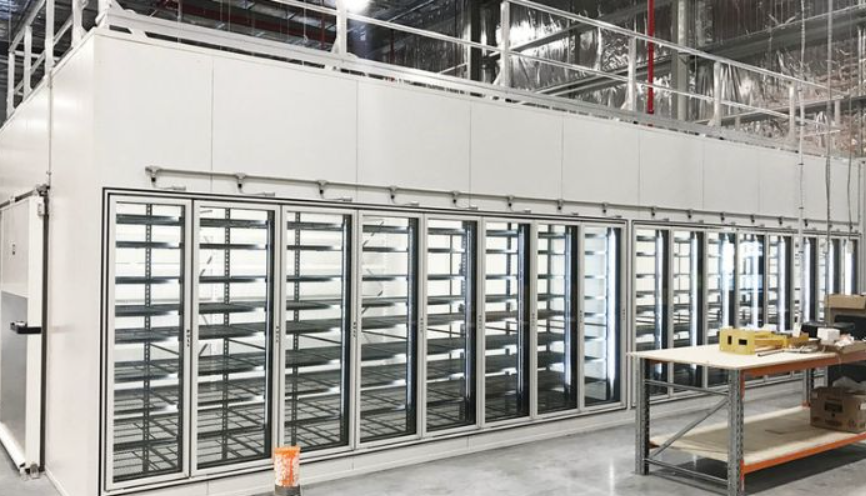Design of pharmaceutical cold storage control system

The pharmaceutical industry relies heavily on maintaining precise temperature and humidity levels throughout the cold chain, from manufacturing to dispensing. A pharmaceutical cold storage is a specialized cold room designed for storing medical products, particularly those sensitive to temperature fluctuations, such as vaccines, blood products, and biological materials. While robust insulation and construction (like advanced PIR cold storage panel) form the physical barrier, it is the Control System that acts as the intelligent nervous system, constantly monitoring, regulating, and safeguarding the precious contents within.
Refrigeration control system
Generic refrigeration controls are woefully inadequate for pharmaceutical applications. The design must address these non-negotiable demands.
Precision stability
Maintaining temperatures within incredibly tight tolerances (e.g., 2°C to 8°C ±0.5°C, -20°C ±1°C, -70°C ±5°C) is paramount. Fluctuations beyond these limits can degrade APIs, biologics, vaccines, and final products.
Redundancy & Resilience
Absolute reliance on single components is unacceptable. Systems must be designed with built-in redundancy for critical elements (sensors, controllers, power supplies) to ensure continuous operation even during component failure or maintenance.
Sensor system of pharmaceutical cold storage control
For facilities like pharmaceutical cold rooms, the sensor system is the basis for precise control of temperature, humidity and air management.
Primary Monitoring Sensors: High-accuracy, calibrated probes (typically Pt100 RTDs or thermistors) strategically placed in critical zones (return air, high/low points, near doors, within product load) to represent the true product environment. Mapping studies are essential to determine optimal placement.
Redundant Sensors: Critical zones utilize multiple, independent sensors. The control system continuously compares them; significant discrepancies trigger an alarm, indicating potential sensor drift or failure.
Door Status Sensors: Monitor door openings/closings, often linked to local audible alarms and delayed notification escalation if open too long.
Controller system
The controller is the brain of the pharmaceutical cold room, acting as the decision maker for each action. Programmable logic controllers (PLCs) or dedicated pharmaceutical controllers, these industrial-grade devices execute the control logic.
Advanced PID Control: Precisely modulates refrigeration capacity (compressor staging, valve positioning) and heating (for defrost, humidity control, or stability in positive temp rooms) to minimize overshoot/undershoot and maintain stability.
Redundant Controllers: Often configured in a primary/backup (hot standby) setup. If the primary fails, the backup seamlessly takes over without interruption.
Robust I/O Handling: Connect and process signals from all sensors and output commands to actuators.
Human-machine interface system
Centralized Visualization: Provides operators with a clear, real-time graphical overview of the entire cold storage facility – temperatures, setpoints, equipment status, alarms.
Data Logging & Historian: Securely stores all critical data with time stamps for the required retention period (often 5+ years).
Alarm Management Console: Centralized display, acknowledgement, and management of all alarms with escalation rules.
Trending & Reporting: Tools to visualize historical data, generate compliance reports (e.g., temperature summaries, alarm logs), and perform analysis.
Remote Access: Secure, authorized remote monitoring capabilities (often via web interface).
Data management system
Secure Database: Protected against unauthorized access, modification, or deletion. Regular backups are essential.
Audit Trail: Automatically logs all significant events: user logins/logouts, parameter changes (setpoints, alarm limits), alarm acknowledgments, system configuration changes. Must be comprehensive, secure, and immutable.
Electronic Signatures : Compliant with 21 CFR Part 11 for critical operations.
Role-Based Access Control (RBAC): Strict user permissions (View Only, Operator, Administrator, Maintenance) prevent unauthorized actions. Unique user IDs and strong passwords are mandatory.
Conclusion
The control system is the indispensable guardian of pharmaceutical cold storage integrity. Its design demands an engineering rigor that prioritizes precision, resilience, data integrity, and compliance above all else. Moving far beyond simple temperature regulation, a well-designed pharmaceutical cold storage control system provides the continuous vigilance, robust redundancy, and irrefutable data trail required to guarantee product quality, meet stringent regulatory demands, and ultimately, protect patient health. Investing in a state-of-the-art, validated control system is not just an operational expense; it’s a critical investment in risk mitigation, regulatory assurance, and the safeguarding of invaluable, life-dependent pharmaceutical products. In the high-stakes cold chain, the control system is the intelligent core upon which ultimate reliability rests.
